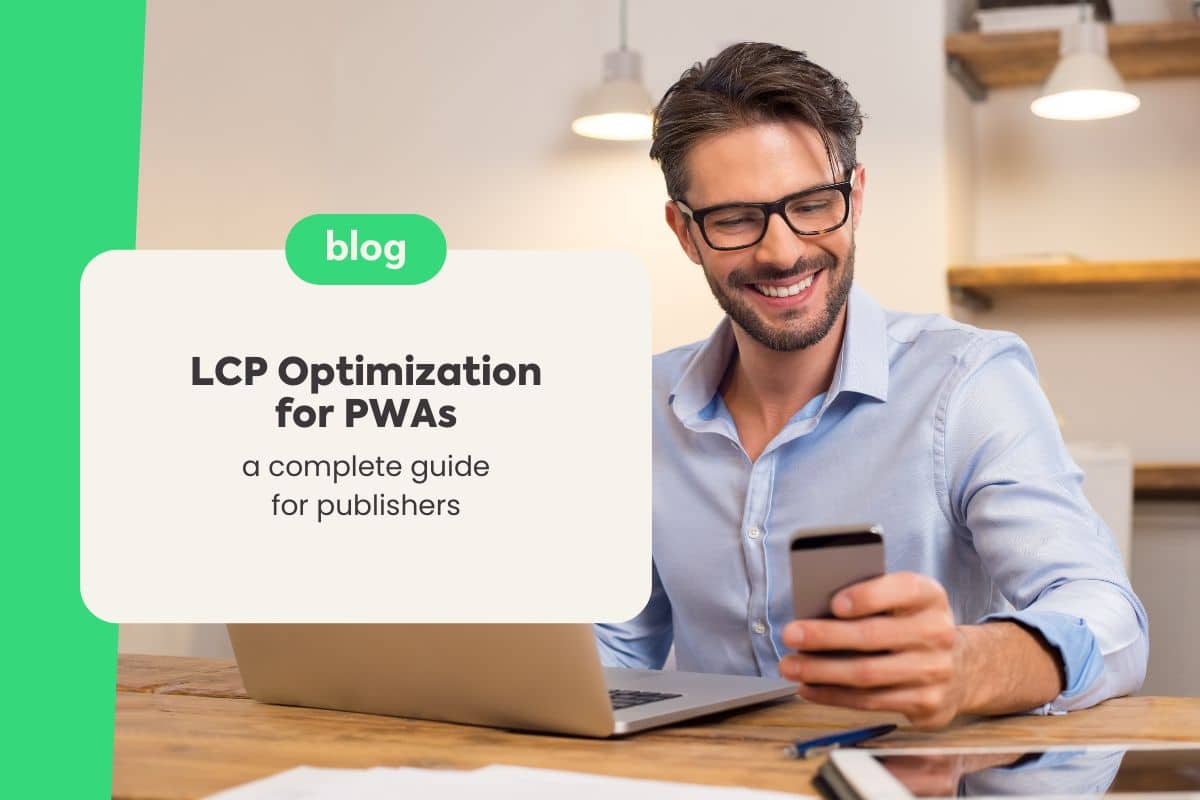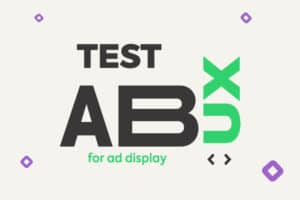Currently, the optimization of the Largest Contentful Paint (LCP) emerges as a decisive factor for both user experience and SEO effectiveness. PWAs, or Progressive Web Apps, arise as powerful allies on the path to exemplary LCP, standing out as a primary solution for publishers looking to overcome web performance challenges.
Index
LCP Optimization for PWAs
LCP refers to the time needed for the largest content element on a page to be loaded and visible to the user, serving as a crucial indicator of the page’s perceived speed. In this context, PWAs play a transformative role, merging the agility of the web with the robustness of native apps. This article aims to equip advanced publishers with the knowledge and techniques to optimize LCP in PWAs, thus ensuring agile and satisfactory navigation.
General LCP Optimization
Code Minification
The minification of HTML, CSS, and JavaScript is an effective strategy to accelerate loading time. By eliminating unnecessary spaces, comments, and other redundant elements, the file size is reduced, facilitating a faster and more efficient load.
Image Optimization
Images constitute a significant portion of a page’s weight. Adopting modern formats, such as WebP, and compressing images without compromising quality are essential steps to improve LCP.
Cache Implementation
Caching allows resources to be stored locally, speeding up loading on subsequent visits. This technique is especially useful for PWAs, where speed and efficiency are fundamental.
Optimized Web Fonts
Choosing optimized web fonts can significantly reduce loading time, improving not only LCP but also the readability of the content.
Redirection Reduction
Each additional redirection introduces delays in page loading. Therefore, minimizing these redirections is crucial to keep LCP within ideal limits.
Brotli Activation
Brotli is a compression algorithm that can reduce the size of HTML, CSS, and JavaScript files, contributing to a faster and more efficient load.
Specific Techniques for PWAs
Pre-cache Critical Resources
Through pre-caching critical resources using Service Workers, it is possible to ensure that the PWA loads quickly, even under adverse network conditions.
Service Worker Registration
The Service Worker acts as a proxy between the browser and the network, allowing resources to be loaded from the cache, which is essential for an optimized LCP.
manifest.json Optimization
The manifest.json file defines the essential settings of the PWA, including icons, name, and resources to be pre-cached. Proper optimization of this file is vital for the PWA’s performance.
Lazy Load Implementation
Lazy loading images and other resources only when necessary can significantly reduce the initial loading time, contributing to an optimized LCP.
Tools for LCP Optimization
Tools such as Lighthouse, PageSpeed Insights, WebPageTest, and Chrome Developer Tools provide valuable insights and optimization suggestions, helping publishers to continually improve their PWAs’ LCP.
Best Practices
Continuous Monitoring
Using monitoring tools to track LCP across different devices and networks is essential to maintain optimal performance.
Test and Iterate
A/B testing can reveal the best strategies for optimizing LCP, emphasizing the importance of an iterative improvement process.
Constant Update
Staying informed about the latest trends and practices in LCP optimization is crucial to ensure that your PWA stays ahead in the performance race.
Additional Resources:
Complete Guide to LCP Optimization, see:
Also check out:
Maintaining LCP Optimized in the Long Term
Beyond LCP is a continuous process. As your PWA evolves and new features are added, it is important to monitor performance and make adjustments to keep LCP optimized. Here are some tips for advanced publishers:
- Automate LCP Monitoring: Set up monitoring tools to automatically alert you of any setbacks in LCP performance.
- Conduct regular performance audits: Perform regular performance audits to identify and correct potential issues.
- Implement code review processes: Establish processes to review code for practices that may affect LCP, such as excessive use of heavy libraries.
- Stay up to date with new technologies: Follow new technologies and LCP optimization tools to further improve your PWA’s performance.
Towards a Faster and More Efficient Site
Optimizing LCP for PWAs is an indispensable component for publishers aspiring to offer a superior user experience. By implementing the techniques and tools discussed, it is possible to achieve a notable improvement in site performance, leading to greater user satisfaction, better SEO, and consequently, expanded success in the digital web.
We encourage publishers to embark on this optimization journey, exploring the depths of advanced techniques and adapting strategies to meet the specific demands of their PWAs. Optimizing LCP is not just a step towards superior performance; it’s an open door to a faster, more efficient, and captivating digital future. And when it comes to monetizing your platform, count on Grumft to support you on this journey.





